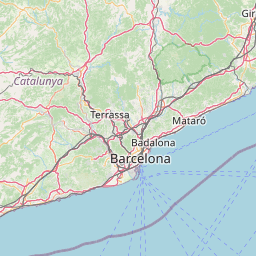Anàlisi comparativa entre les plantacions de pi pinyer (Pinus pinea L.) de llavor i les empeltades
Tutor/a - Director/a
Aletà Soler, Neus
Estudiant
Vives Ortiz, Guillem
Tipus de document
Treball Final de Grau
Data
2020
rights
Accés obert
Editorial
Universitat Politècnica de Catalunya
Titulacions
UPCommons
Resum
The stone pine (Pinus pinea L.) is a tree species native to the Mediterranean region, much appreciated for its edible seed: the pine nut. Pine nuts are highly valued products in gastronomy for their taste and nutritional and organoleptic quality. It has been consumed in many dishes since ancient times and has been encouraged to expand. Its global demand is currently on the rise and the prices paid for this seed are very high. Despite this link to humans throughout history, the stone pine is a tree that has not been domesticated, as is the case with other nuts-producing trees. Today most of the production of pine nuts still takes place in the forests. Only in recent decades have efforts been made to domesticate the species, through knowing the behaviour of this tree, the factors that determine its production, the techniques that have to be applied to maximize its fruiting and the genetic selection of the individuals with more and better production. The present work is based on the research context of the stone pine in order to be able to manage it in a fruitful way, similar to the cultivation techniques of other nuts-producing trees. The work focuses on the type of plant reproductive material of stone pine: seeds and grafts. These are two ways to generate new plantations and will be analysed what these materials are and what their advantages and disadvantages are. Therefore, the aim of this study is to compare plantations that come from seed and graft. All the information has been collected from scientific and informative publications on the stone pine and its cultivation, as well as all the first-hand information that the mentors of the work have provided to its author. There is also talk about the challenges for the future of this species, whether in intensive plantations or forests, and how climate change will affect its productive viability. At the end of the work, a specific proposal for the planting of stone pine is presented with the decisions recommended by the author, according to the information presented in the work. An agroforestry system has been chosen, which combines different producing species on the same plot and increases its economic and environmental benefit. Considering the two reproductive methods explained, it is advisable to opt for the use of the graft to have highly productive plantations with early production. Seed trees are cheaper and easier to obtain, but their production of pine nuts is lower and takes longer to start. Grafted trees also have the great advantage of being able to use highly productive clones and rootstock appropriate to the soil conditions of the land.
El pino piñonero (Pinus pinea L.) es una especie arbórea originaria de la región mediterránea, muy apreciada por su semilla comestible: el piñón. Los piñones son productos muy bien valorados en gastronomía por su sabor y su calidad nutricional y organoléptica. Desde la antigüedad se han consumido en numerosos platos y se ha favorecido su expansión. Actualmente su demanda a nivel global está en aumento y los precios pagados por esta semilla son muy elevados. Aunque exista este vínculo con el ser humano a lo largo de la historia, el pino piñonero es un árbol que no se ha domesticado, como sí ocurrió con otros árboles productores de frutos secos. Hoy en día la mayor parte de la producción de piñones todavía tiene lugar en los bosques. Solo en las últimas décadas se han hecho esfuerzos para domesticar la especie, a través de conocer el comportamiento de este árbol, los factores que determinan su producción, las técnicas que hay que aplicar para maximizar su fructificación y la selección genética de los individuos con más y mejor producción. El presente trabajo parte de este contexto de investigación del pino piñonero para poder gestionarlo desde una manera frutal, parecida a las técnicas de cultivo de los otros árboles productores de frutos secos. El trabajo se centra en el tipo de material vegetal de reproducción del pino piñonero: las semillas y los injertos. Estas son dos maneras de generar nuevas plantaciones y se analizará cómo son estos materiales y qué ventajas e inconvenientes presentan. Pues, el objetivo de este trabajo es comparar las plantaciones de pino piñonero de semilla y las injertadas. Toda la información ha sido recogida de publicaciones científicas y divulgativas sobre el pino piñonero y su cultivo, así como toda la información de primera mano que las tutoras del trabajo han aportado a su autor. También se habla de cuáles son los retos para el futuro de esta especie, ya sea en plantaciones intensivas o en bosques, y sobre como el cambio climático afectará su viabilidad productiva. Al final del trabajo se presenta una propuesta concreta de plantación de pino piñonero con las decisiones que recomienda el autor, según la información que hay expuesta en el trabajo. Se ha optado por un sistema agroforestal, que combine diferentes especies productoras en la misma parcela y aumenten el beneficio económico y medioambiental. Teniendo en cuenta los dos métodos reproductivos explicados, conviene decantarse por el uso del injerto para tener plantaciones altamente productivas y con producciones precoces. Los árboles de semilla son más baratos y sencillos de conseguir, pero su producción de piñón es menor y tarda más años en iniciarla. Los árboles injertados también tienen la gran ventaja de poder utilizar clones altamente productivos y patrones adecuados a las condiciones edafológicas del terreno.
El pi pinyer (Pinus pinea L.) és una espècie arbòria originaria de la regió mediterrània, molt apreciada per la seva llavor comestible: el pinyó. Els pinyons són productes molt ben valorats en gastronomia pel seu sabor i la seva qualitat nutricional i organolèptica. Des de l'antiguitat s'han consumit en nombrosos plats i s'ha afavorit la seva expansió. Actualment la seva demanda a nivell global està en augment i els preus pagats per aquesta llavor són molt elevats. Tot i aquest vincle amb l'ésser humà al llarg de la història, el pi pinyer és un arbre que no s'ha domesticat, com si va ocórrer amb altres arbres productors de fruita seca. Avui en dia la major part de la producció de pinyons encara té lloc als boscos. Només en les darreres dècades s'han fet esforços per domesticar l'espècie, a través de conèixer el comportament d'aquest arbre, els factors que determinen la seva producció, les tècniques que cal aplicar per maximitzar la seva fructificació i la selecció genètica dels individus amb més i millor producció. El present treball parteix d'aquest context d'investigació del pi pinyer per a poder gestionar-lo des d'una manera fruitera, semblant a les tècniques de cultiu dels altres arbres productors de fruita seca. El treball es centra en el tipus de material vegetal de reproducció del pi pinyer: les llavors i els empelts. Aquestes són dos maneres de generar noves plantacions i s'analitzarà com són aquests materials i quins avantatges i inconvenients presenten. Doncs, l'objectiu d'aquest treball és comparar les plantacions de pi pinyer de llavor i les empeltades. Tota la informació ha estat recollida de publicacions científiques i divulgatives sobre el pi pinyer i el seu cultiu, així com tota la informació de primera mà que les tutores del treball han aportat al seu autor. També es parla de quins són els reptes pel futur d'aquesta espècie, ja sigui en plantacions intensives o en boscos, i sobre com el canvi climàtic afectarà la seva viabilitat productiva. Al final del treball es presenta una proposta concreta de plantació de pi pinyer amb les decisions que recomana l'autor, segons la informació que hi ha exposada al treball. S'ha optat per un sistema agroforestal, que combini diferents espècies productores a la mateixa parcel·la i n'augmentin el benefici econòmic i mediambiental. Tenint en compte els dos mètodes reproductius explicats, convé decantar-se per l'ús de l'empelt per a tenir plantacions altament productives i amb producció precoç. Els arbres de llavor són més barats i senzills d'aconseguir, però la seva producció de pinyons és menor i triga més anys en iniciar-la. Els arbres empeltats també tenen el gran avantatge de poder utilitzar clons altament productius i patrons adequats a les condicions edafològiques del terreny.
Entitat col·laboradora
Institut de Recerca i tecnologia Agroalimentàries
Localització

Professorat participant
- Aletà Soler, Neus














